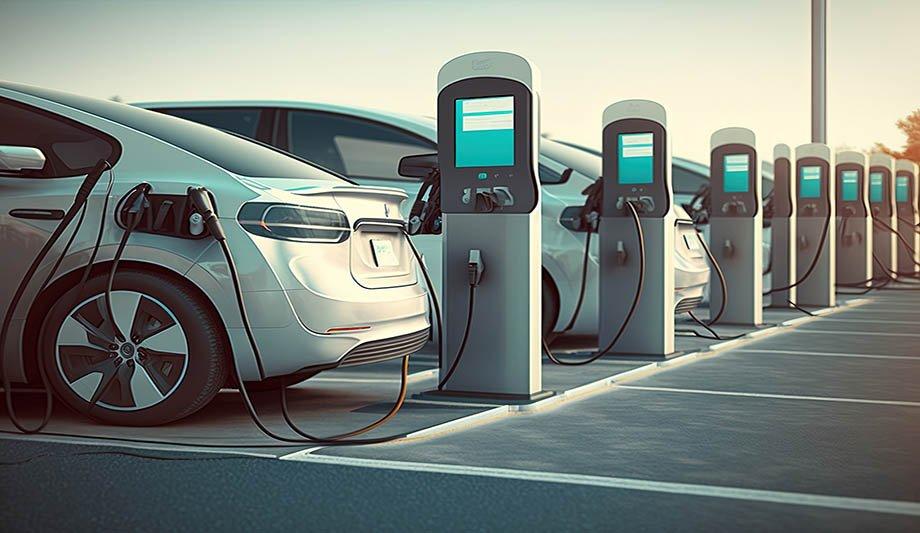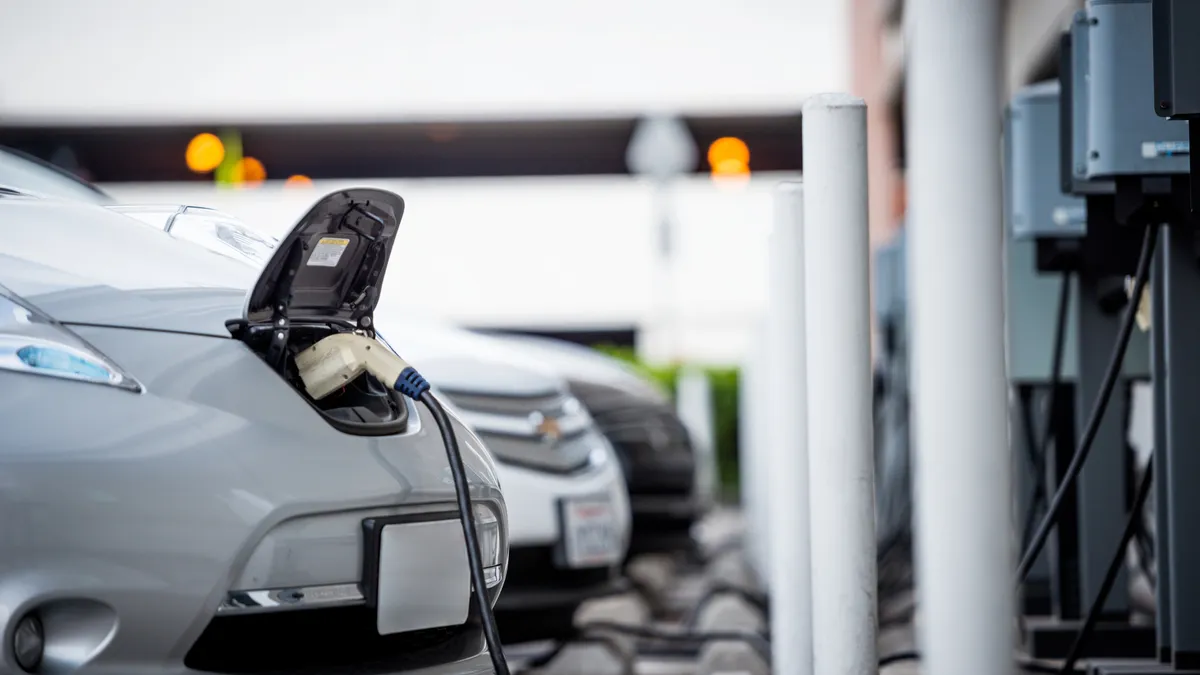What’s Driving the Growth of EV Infrastructure? Buy EV Charging news for Key Updates
What’s Driving the Growth of EV Infrastructure? Buy EV Charging news for Key Updates
Blog Article
Top EV Charging Information: Trick Updates on Framework and Innovation

Current Advancements in Fast-Charging Innovation

Furthermore, developments in battery innovation, including improved thermal management systems and greater energy density batteries, enhance fast-charging capabilities. These developments mitigate the danger of battery destruction throughout fast charging, ensuring long life and performance for EV proprietors.
Additionally, the combination of clever billing options is improving user experience, allowing real-time surveillance and vibrant rates models. EV Charging news. This adaptability enables chauffeurs to maximize charging prices and times based on grid need
As car manufacturers continue to purchase fast-charging networks, the cooperation in between sector stakeholders is crucial. Partnerships in between billing station companies and automotive suppliers are paving the means for extensive protection, ultimately promoting a more robust EV environment. These developments are pivotal in sustaining the shift to sustainable transport.
Federal Government Efforts for Billing Expansion
Government initiatives play an essential role in the growth of electric lorry (EV) charging facilities, assisting in the transition to lasting transportation. Numerous government and state programs are being implemented to boost charging availability, lower the economic concern on consumers, and advertise the adoption of electrical automobiles.
Notably, the united state federal government has actually assigned significant funding with the Framework Investment and Jobs Act, which sets aside $7.5 billion for EV charging network growth across the nation. This financing is targeted at releasing thousands of new charging terminals, specifically in underserved areas, therefore attending to array anxiety among prospective EV buyers.
Furthermore, many states are passing regulation to improve the allowing procedure for charging terminal installments, which is essential for increasing implementation. Motivations such as tax obligation credit ratings and rebates for both customers and organizations are also being introduced to urge the installment of charging facilities.
Moreover, public-private collaborations are significantly ending up being an emphasis, leveraging exclusive investment to complement federal government financing. These efforts underscore a collective technique essential for developing a reliable and detailed EV billing network, eventually adding to a greener and even more sustainable future.
Cutting-edge Battery Solutions Enhancing Effectiveness
Reinventing the landscape of electrical lorry (EV) technology, cutting-edge battery options are dramatically boosting efficiency and efficiency. Advancements in battery chemistry, especially with lithium-sulfur and solid-state batteries, are causing enhanced power thickness, which enables longer arrays and faster billing times. These brand-new battery types have the potential to outperform traditional lithium-ion batteries by providing higher capabilities while minimizing weight, thus enhancing overall lorry effectiveness.
Furthermore, developments in battery monitoring systems (BMS) are optimizing power use and extending battery lifespan. Smart formulas keep an eye on battery health and efficiency, allowing real-time modifications to billing and releasing procedures. This not only enhances the performance of the battery but likewise makes certain Visit This Link a more sustainable and trusted power resource for EVs.
Additionally, the integration of recycling modern technologies is addressing the ecological effect of battery manufacturing and disposal. Developments in second-life applications for EV batteries are facilitating their usage in energy storage space systems, adding to a circular economic climate.
As these innovative battery remedies continue to evolve, they promise to transform the EV market, making electrical lorries much more accessible and attractive to a broader target market while sustaining global sustainability objectives.

Partnership In Between Automakers and Charging Networks
Recognizing the critical requirement for a durable charging facilities, automakers are increasingly working together with charging network companies to enhance the EV ownership experience (EV Charging news). These collaborations intend to produce a seamless charging community that benefits consumers and sustains the change to electrical lorries
Significant auto brand names are joining forces with well-known charging networks to broaden their billing terminal coverage, guaranteeing motorists have accessibility to reputable and hassle-free charging choices. Collaborations with networks like ChargePoint and Electrify America you can find out more allow car manufacturers to integrate charging options straight into their vehicles' navigation systems, directing customers to the closest terminals and offering real-time availability updates.
Additionally, these collaborations typically cause the growth of fast-charging modern technologies that considerably reduce the time required to charge an EV. By pooling resources and proficiency, automakers and charging networks can innovate much faster, producing solutions that meet the expanding demand for electrical mobility.
On top of that, joint initiatives may also cause even more standard billing methods, which can minimize customer confusion and advertise broader EV fostering. Overall, these calculated partnerships are essential in constructing a user-friendly and efficient billing framework that fulfills the demands of an expanding electrical lorry market.
Obstacles Encountering EV Charging Infrastructure
As the electrical lorry market continues to grow, several challenges are emerging that hinder the advancement of a detailed charging infrastructure. One of the main obstacles is the insufficient number of billing stations, specifically in underserved and country city areas. This gap develops array stress and anxiety among possible EV customers, hindering them from making the button.
Additionally, the absence of standardization accountable technology makes complex the infrastructure landscape. Variations in plug types and charging rates can produce complication for users and boost functional intricacies for billing network operators. The integration of charging stations into existing electrical grids postures significant challenges. Lots of regions face capability restrictions, calling for considerable financial investments in grid upgrades to fit enhanced need.
An additional pressing problem is the high expense connected with the installation and upkeep of billing terminals, which can be a barrier for both public entities and exclusive businesses. Regulatory obstacles and zoning restrictions can postpone the deployment of charging infrastructure, impeding progression in expanding crucial services. Resolving these obstacles will be vital for promoting a robust EV environment that sustains the change to lasting transportation.
Conclusion
Finally, the ongoing advancements in EV charging technology, sustained by substantial federal government initiatives and ingenious battery options, are critical for the growth and effectiveness of electric automobile framework. Partnerships between car manufacturers and charging providers even more improve station coverage, dealing with the growing need for accessible billing choices. In spite of obstacles that persist within the EV charging landscape, these advancements signify a positive trajectory in the direction of a much more sustainable and effective electric automobile ecosystem.
Innovations in charging framework have led to the advancement of ultra-fast battery chargers qualified of supplying up to 350 kW of power, significantly lowering basics billing times. Variations in plug types and billing rates can produce confusion for users and increase functional intricacies for charging network drivers.In conclusion, the recurring advancements in EV charging modern technology, sustained by considerable federal government efforts and innovative battery remedies, are critical for the growth and performance of electrical automobile facilities. Cooperations in between car manufacturers and billing companies better enhance station insurance coverage, dealing with the growing demand for obtainable billing options. Despite challenges that persist within the EV charging landscape, these advancements symbolize a positive trajectory towards a more sustainable and reliable electric lorry ecological community.
Report this page